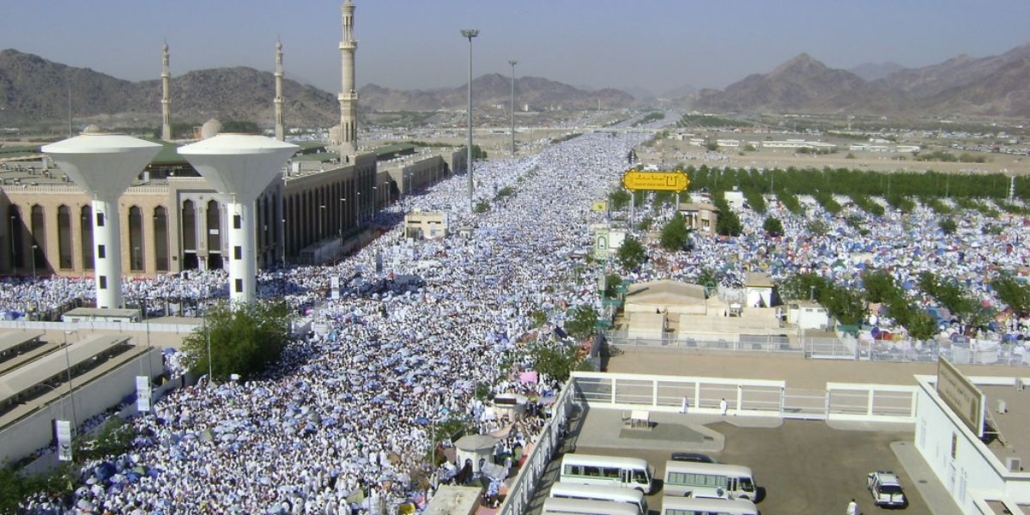Hajj the pilgrimage to the holy city of Mecca, is one of the fundamental pillars of Islam. Obligatory upon those who are physically and financially capable. While the essence of Hajj remains the same for all pilgrims. There are variations in the types of Hajj that individuals may perform based on their circumstances and capabilities. In this article, we will explore the different types of Hajj. As outlined in Islamic teachings, drawing upon references from the Quran.
Hajj al-Tamattu’ (Interrupted Hajj)
Hajj al-Tamattu’, also known as the “Interrupted Hajj,” involves performing Umrah followed by Hajj with a break in between. Pilgrims undertaking Hajj al-Tamattu’ enter into the state of Ihram for Umrah during the months of Hajj (Shawwal, Dhul-Qa’dah, and the first ten days of Dhul-Hijjah), complete the rites of Umrah, exit Ihram, and then enter Ihram again for Hajj.
- Quranic Reference: “Complete the Hajj and Umrah for Allah.” (Surah Al-Baqarah, 2:196)
Hajj al-Qiran (Combined Hajj)
Hajj al-Qiran, or the “Combined Hajj,” involves combining the rites of Umrah and Hajj without exiting the state of Ihram in between. Pilgrims performing Hajj al-Qiran enter into Ihram to perform both Umrah and Hajj together. This type of Hajj requires the pilgrim to maintain the state of consecration until the completion of both Umrah and Hajj.
- Quranic Reference: There is no specific Quranic reference to Hajj al-Qiran, but it is derived from the actions of the Prophet Muhammad (peace be upon him) and his companions during Hajj.
Hajj al-Ifrad (Single Hajj)
Hajj al-Ifrad, or the “Single Hajj,” involves performing only the rites of Hajj without combining them with Umrah. Pilgrims undertaking Hajj al-Ifrad enter into Ihram solely to perform Hajj and do not perform Umrah as part of their pilgrimage.
- Quranic Reference: There is no specific Quranic reference to Hajj al-Ifrad, but it is recognized as a valid type of Hajj based on the actions of the Prophet Muhammad (peace be upon him) and his companions.
Differences in Obligations and Rituals:
- While the essence of the pilgrimage remains the same across all types of Hajj, there are differences in the obligations and rituals associated with each type. For example, pilgrims performing Hajj al-Tamattu’ are required to perform Umrah before proceeding to Hajj, whereas those performing Hajj al-Qiran combine the rites of Umrah and Hajj without a break in between.
- Additionally, the timing and sequence of certain rituals may vary depending on the type of Hajj being performed. For example, pilgrims performing Hajj al-Tamattu’ may complete the rites of Umrah during the months of Hajj and then proceed to Hajj after a break, while those performing Hajj al-Qiran combine the rites of Umrah and Hajj without a break in between.
Personal Circumstances and Choices:
- The choice of which type of Hajj to perform depends on the individual’s circumstances, preferences, and level of devotion. Some pilgrims may opt for the simplicity and focus of Hajj al-Ifrad. While others may choose the convenience and flexibility of Hajj al-Tamattu’ or Hajj al-Qiran.
- Regardless of the type of Hajj chosen, the overarching goal remains the same. To fulfill the religious obligation of pilgrimage with sincerity, humility, and devotion, seeking Allah’s forgiveness and blessings.
Importance of Intention and Sincerity:
- Regardless of the type of Hajj chosen, the sincerity of intention and devotion to Allah are paramount. Hajj is not merely a series of rituals to be performed mechanically but a spiritual one. The journey of purification, self-reflection, and submission to the will of Allah.
- Pilgrims are reminded to approach Hajj with humility, gratitude, and a sincere desire for spiritual transformation. Seeking forgiveness for past sins and striving to renew their commitment to Islamic principles and values.
Conclusion
In conclusion, the different types of Hajj offer pilgrims flexibility. And options based on their circumstances, preferences, and level of devotion. Whether performing Hajj al-Tamattu’, Hajj al-Qiran, or Hajj al-Ifrad, the essence of the pilgrimage remains the same. A sacred journey of spiritual purification, devotion, and submission to the will of Allah. May Allah accept the Hajj of all pilgrims and grant them forgiveness, mercy, and blessings.
